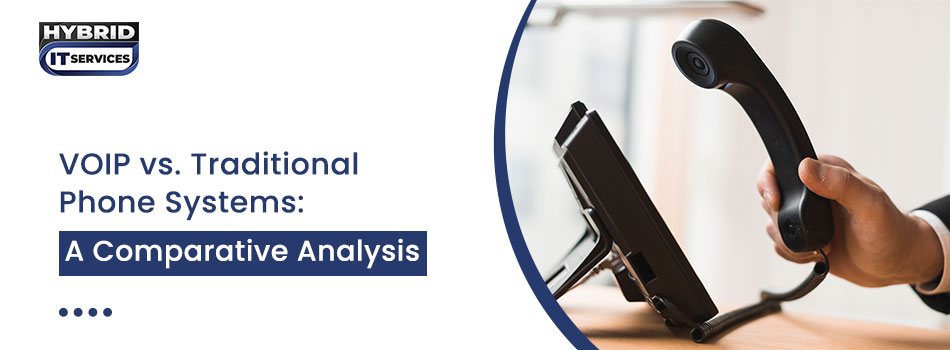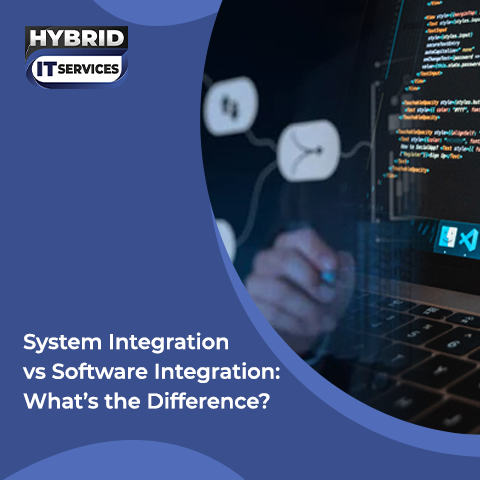In the evolving landscape of business communication, the choice between Voice over Internet Protocol (VoIP) and traditional phone systems is crucial. As companies strive to enhance their communication infrastructure, understanding the differences between these technologies can lead to better decision-making. This article delves into a detailed comparative analysis of VoIP and traditional phone systems, covering various aspects such as cost, flexibility, features, reliability, security, and future trends.
Understand VOIP and Traditional Phone Systems
What is VoIP?
VoIP, or Voice over Internet Protocol, is a technology that allows voice communication and multimedia sessions over the internet. Instead of transmitting calls through traditional phone lines, VoIP converts voice signals into digital data packets and sends them over the internet. This technology has gained immense popularity due to its cost-effectiveness and advanced features.
What are Traditional Phone Systems?
Traditional phone systems, also known as Public Switched Telephone Networks (PSTN), use circuit-switched telephony for voice communication. These systems have been the backbone of business communication for decades, relying on physical phone lines and exchanges to connect calls. While reliable and widely used, traditional phone systems often come with higher costs and limited features compared to their VoIP counterparts.
VOIP vs. Traditional Phone Systems a Comparative Analysis
Let’s see the contrast over multiple features below:
Financial Implications of VoIP and Traditional Phones
One of the most significant differences between VoIP and traditional phone systems is the cost. VoIP systems generally offer lower costs due to their use of the internet for call transmission. Businesses can save on long-distance and international call charges, as VoIP treats these calls the same as local calls. Additionally, VoIP systems often come with lower setup and maintenance costs, as they require minimal hardware and infrastructure.
In contrast, traditional phone systems involve higher costs. These include expenses for physical phone lines, hardware, installation, and ongoing maintenance. Long-distance and international calls can be significantly more expensive, making traditional systems less cost-effective for businesses with frequent global communication needs. Furthermore, upgrading or expanding a traditional phone system can be costly and time-consuming.
Adaptability and Growth Potential
Flexibility and scalability are crucial factors for modern businesses, and here, VoIP has a clear advantage. VoIP systems offer unparalleled flexibility, allowing employees to make and receive calls from anywhere with an internet connection. This is particularly beneficial for remote work and mobile employees. VoIP also enables seamless integration with other communication tools, such as video conferencing and instant messaging, enhancing overall productivity.
Scalability is another strong point of VoIP systems. Adding new users or lines is straightforward and can be done without significant hardware investments. Businesses can easily scale their communication infrastructure to match their growth.
In contrast, traditional phone systems lack this level of flexibility. Employees are typically tied to their desks, limiting mobility and remote work capabilities. Scalability can also be challenging and expensive, requiring additional physical lines and hardware for expansion.
Comprehensive Feature Comparison
VoIP systems offer a rich feature set that goes beyond simple voice communication. Features like call forwarding, voicemail-to-email, auto-attendants, call analytics, and integrations with Customer Relationship Management (CRM) systems are commonly available. These features can significantly enhance business operations, improve customer service, and streamline workflows.
Traditional phone systems, while reliable for basic voice communication, often lack advanced features. Implementing additional functionalities typically requires costly upgrades or third-party solutions, which can be cumbersome and less integrated.
Advanced Functionalities of VoIP and PSTN
VoIP systems are packed with advanced functionalities that cater to modern business needs. Features such as video conferencing, virtual phone numbers, call recording, and instant messaging are standard in many VoIP solutions. These functionalities support a unified communication strategy, enabling seamless interaction across various channels.
Traditional phone systems focus primarily on voice communication and lack the comprehensive features of VoIP. While they may offer basic functionalities like call waiting and voicemail, they fall short in providing the diverse communication tools required by today's businesses.
Dependability and Audio Quality
Reliability and call quality are critical considerations when choosing a communication system. Traditional phone systems are known for their reliability and consistent call quality. Since they rely on dedicated phone lines, they are less susceptible to internet-related issues such as bandwidth limitations or outages.
VoIP systems, while generally reliable, depend on the quality and stability of the internet connection. Poor internet connectivity can lead to issues such as dropped calls, latency, and jitter. However, with the advent of high-speed internet and advanced VoIP technologies, call quality has significantly improved, making VoIP a viable option for many businesses.
Security Aspects
Security is a paramount concern for any communication system. Traditional phone systems offer a higher level of security due to their use of dedicated phone lines, which are less vulnerable to cyber threats. However, they are not entirely immune to security issues, such as wiretapping or physical damage to infrastructure.
VoIP systems, on the other hand, operate over the internet, making them more susceptible to cyberattacks such as hacking, phishing, and eavesdropping. However, modern VoIP solutions incorporate robust security measures, including encryption, secure protocols, and firewalls, to protect communication data. Businesses must ensure they implement these security measures to safeguard their VoIP systems.
Future Trends in Business: VoIP vs. Traditional Phones
The future of business communication is increasingly leaning towards VoIP. The shift towards remote work, global collaboration, and the need for advanced communication tools make VoIP an attractive choice for businesses. As internet infrastructure continues to improve and security measures become more robust, VoIP's advantages in cost, flexibility, and features are likely to drive its adoption further.
Traditional phone systems, while still reliable, are gradually becoming outdated. Their higher costs, limited features, and lack of flexibility make them less appealing in the modern business environment. However, they will continue to be used in certain industries and regions where internet infrastructure is not as developed or where a high level of reliability is paramount.
Conclusion
In the comparative analysis of VoIP and traditional phone systems, it is clear that VoIP offers numerous advantages in terms of cost, flexibility, features, and scalability. While traditional phone systems remain reliable and secure, they fall short in meeting the evolving needs of modern businesses. As technology advances and communication requirements become more sophisticated, VoIP is poised to become the dominant choice for business communication. By understanding the differences and carefully considering their specific needs, businesses can make informed decisions that enhance their communication infrastructure and support their growth.






